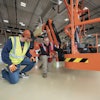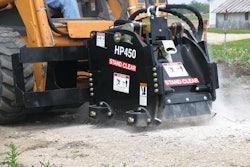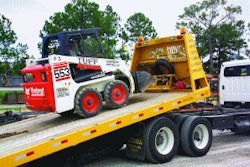
Inspect what you expect. It's an old and familiar saying. It's also an operating philosophy that can lead to both good or bad outcomes depending how rigidly it is deployed by management. You have to make sure you are inspecting the right things because looking at the wrong things can pose a threat to your business.
Expectations in the field
Let's start with the two most important items to inspect for: safety and quality.
If we expect our workers to follow OSHA's safety rules we will need to monitor their willingness to do so. The best way to do that is with surprise drop-by inspections. Don't let your foreman know when a member of your management team will be stopping by. Once the foreman and crew workers accept that someone may drop in at any moment they will follow safety procedures much more consistently. There is more to the safety story than surprise inspections, but as we are stressing here: inspect what you expect.
The same logic applies to quality of construction. You have a specific level of quality you expect from your crews. We both know that level may not exactly match what is required by the plans and specifications. That isn't the point. The point is that you expect a certain level of quality to be delivered by each of your tradesmen, and the only way to ensure they are producing at that level is to visit the field.
The most efficient way to inspect quality is to do it when you are doing your safety inspections. This is one of the downsides of sending a dedicated safety officer out. He or she may not be able to detect poor quality craftsmanship. Of course the flip side of that coin is also true, if your production management team members aren't completely up to speed on OSHA requirements and willing to enforce adherence they will overlook the safety problems while on site.
Expectations in the office
Let's move on to the front office. If you expect your estimator to make accurate takeoffs and predict construction costs accurately you'd better figure out a way to routinely and systematically inspect that expectation. This is an inspection I have rarely seen. Everyone notices when a bid is completely blown. That's obvious. I expect estimators to consistently predict man-hours and costs within 5 percent of the final outcome. When I say consistently I mean eight projects out of 10 on average. You inspect that by periodically looking at your actual costs, materials and hours on completed projects and compare those numbers directly against the estimator's predictions. I expect the estimator to get 50 percent of the individual cost code allocations within +/- 5 percent also. To check those you will need to compare actual hours and costs per cost code against the estimators' predictions.
If you expect to make money at the end of the year you'd better inspect for that. How do you inspect your net income? You create a detailed budget for your business and keep a close eye on your progress against it.
If you expect to hit a billable hour target at year end you had better keep a very close eye on the billable hours you've sold and the speed at which they are going in. You had better also keep track of your unbillable hours as they will undermine your budget if not held in check.
If you expect your members of your sales team to make five cold calls a day you had better track that. Make them document their prospecting calls.
If you expect field paperwork to be turned in daily, you had better track that.
You get the idea right?
Unfortunately some of the things you expect are not truly inspectable. Decision making is a good example. It can be very difficult to inspect how well a decision was made. Judging purely by the result of the decision is a mistake. All decisions involve some element of randomness. In other
words, not all of the variables involved are controllable. That one in a million shot does occasionally occur. Good decision making factors in risk and likelihood. Inspect the decision process not the result.
The real problem with adhering rigidly to the philosophy of inspect what you expect is that it can get workers focusing only on the things you are inspecting at the exclusion of things you aren't. Perfect the systems and improve the culture, and you can cover all your bases.
Create the understanding among your employees that it is in their best interested to do things right. Hopefully your inspections will reveal everyone is.




















